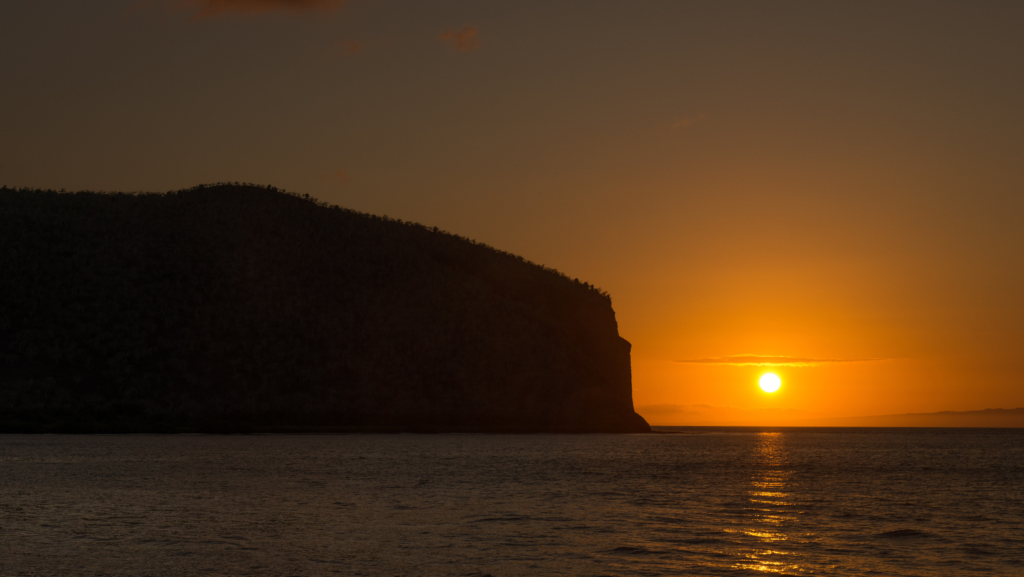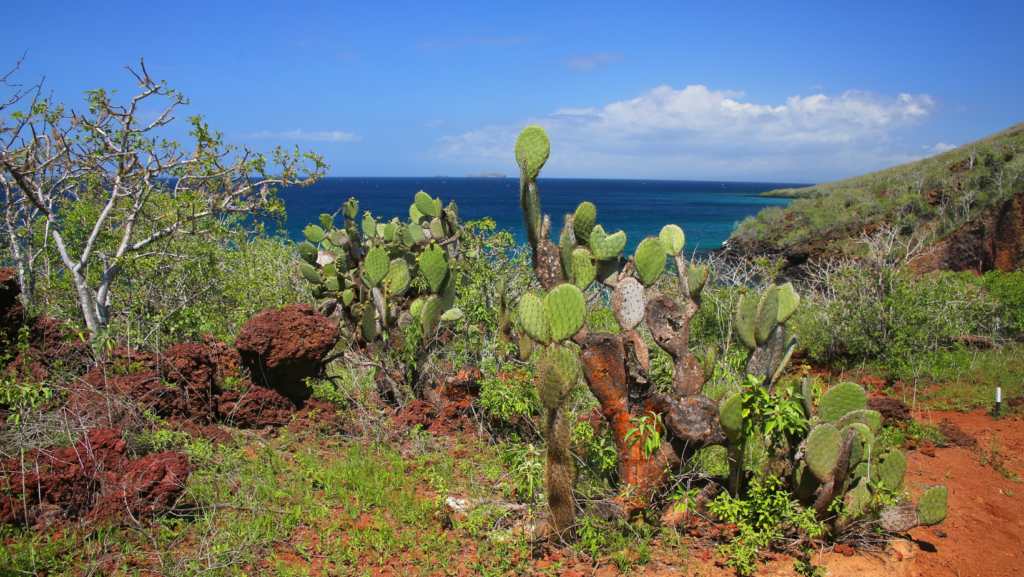
Sullivan Bay is located on the east part of Santiago Island and presents a great geologic interest. The area is cover in lava flows which makes it a very spectacular place to visit. Here, you can enjoy the marine wildlife of the Galapagos while snorkeling. Sullivan Bay is one of the most beautiful places in the Galapagos to snorkel with its crystal clear waters!
Visiting Sullivan Bay is often combined with visiting Bartolome Island, as the areas are close to each other. This place can be visited on a naturalist cruise or on a day trip from Santa Cruz.

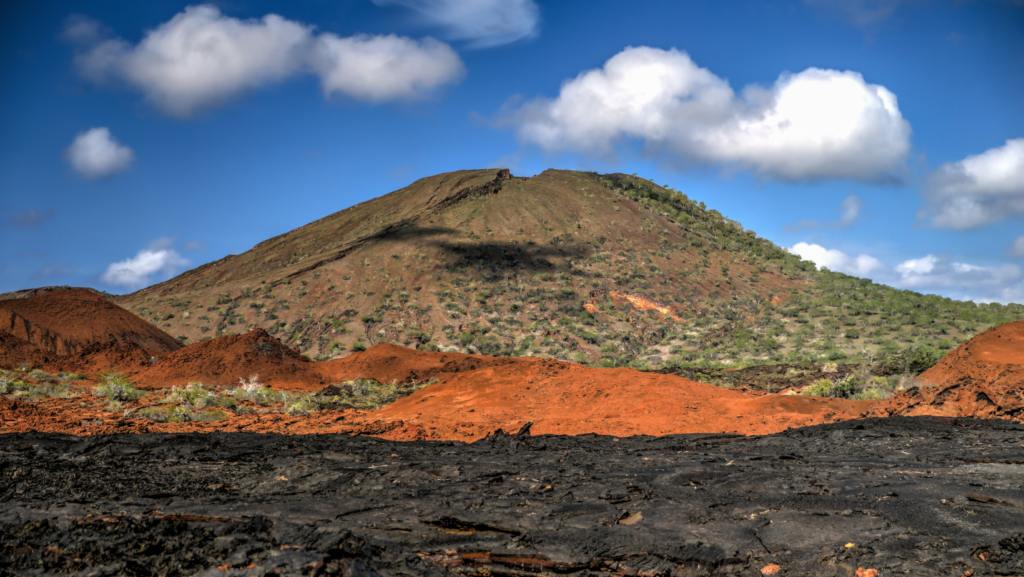

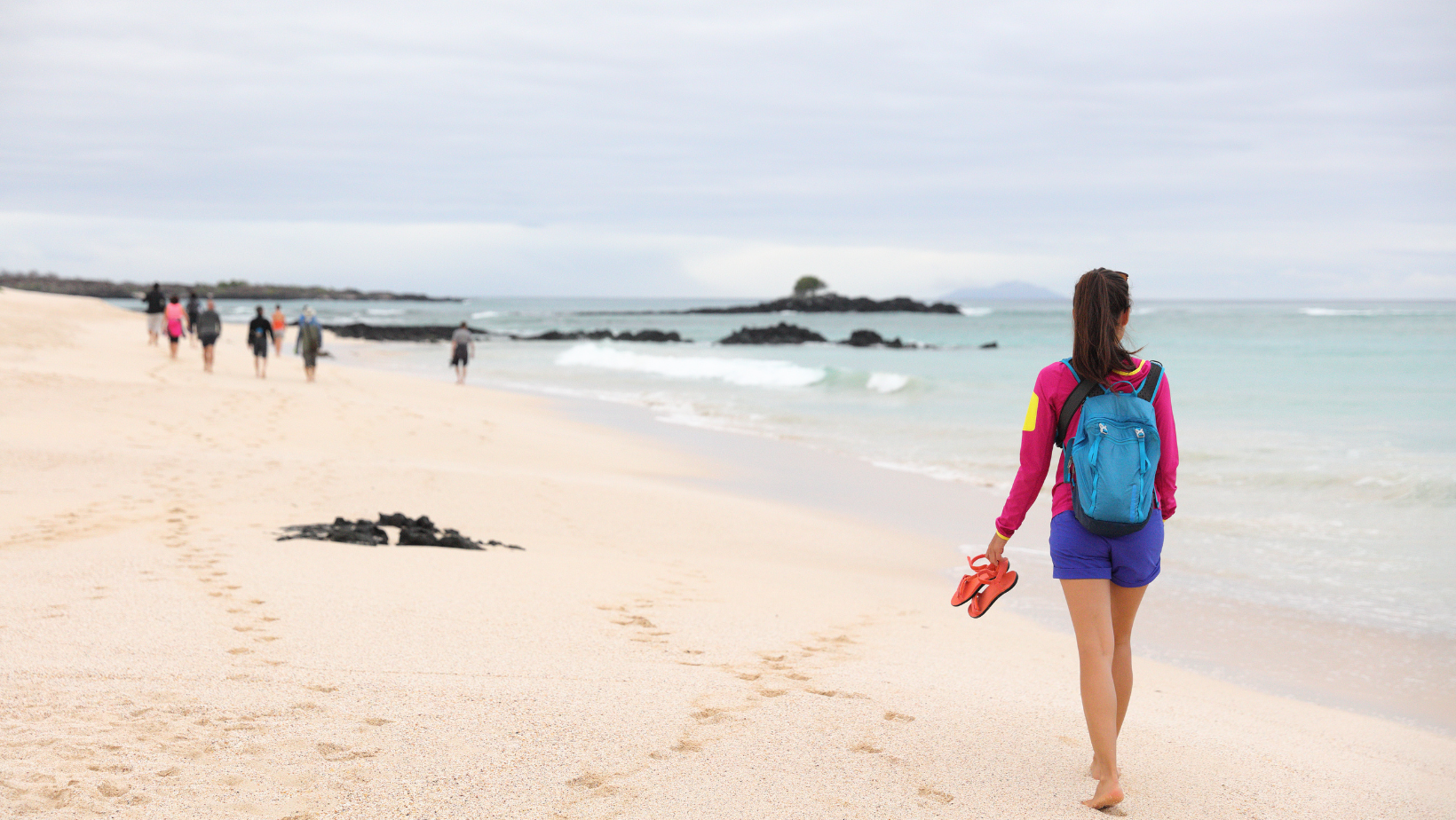
Located on the north of Santa Cruz Island, it is possible to snorkeling or take a relaxing walk on the beach. It is recommended to disembark barefoot and wear light walking shoes. Here you will find a lovely beach, ideal for swimming, with a lagoon behind and a longer beach ideal for walking and spotting wildlife. The saltwater lagoon behind the beach is often home to large blue herons and small birds. Large and small beaches are nesting areas for green sea turtles. While snorkeling, you can see many types of colorful reef fish and various rays, among other marine species.
This beach is accessible via a daily excursion from Santa Cruz or in some naturalist cruise itineraries.
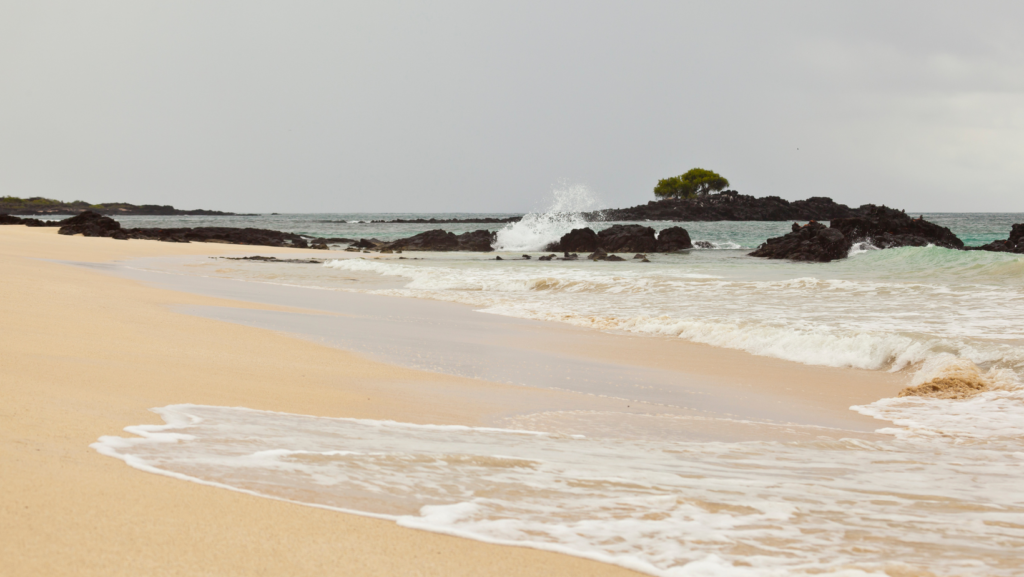
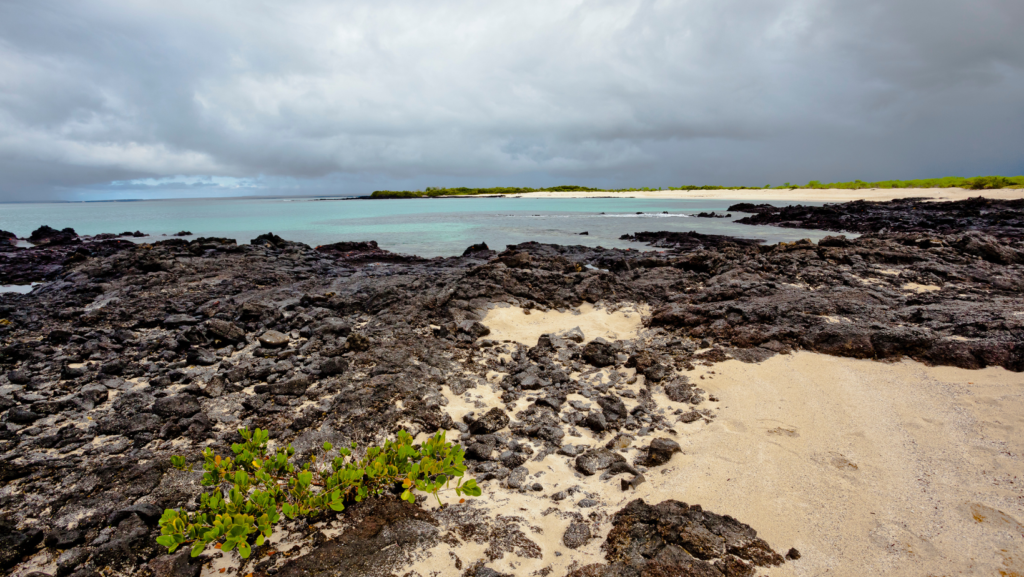

Sombrero Chino or “Chinese Hat” is an islet accessible by a daily excursion or via some naturalist cruise itineraries. It is an inactive volcanic islet, located near the island of Santiago, which has a particular shape that resembles a traditional Chinese hat, hence its name. Landing on its pristine white sand beach, after two hours of navigation from the Itabaca Channel, you will enter a world of spectacular contrasts. You’ll explore rugged lava formations, creating an otherworldly backdrop. The landscape here is not only unique; it is stunningly beautiful, with a mixture of hard lava flows contrasting with the soft, welcoming sand of the islet. Prepare to meet Galapagos sea lions, which often grace the beaches of Sombrero Chino. We also recommend keeping your eyes opened for the iconic marine iguanas sunbathing. Sometimes, with a little luck, you can spot the majestic Galapagos hawk, a true symbol of the wild spirit of the archipelago ! The waters surrounding Sombrero Chino are also home to fascinating marine life, including a wide variety of fish, shark and, occasionally, stingrays and penguins. As part of an excursion, you will probably then take a Zodiac ride along the coast of the neighboring island of Santiago where you may have the opportunity to see penguins. The snorkeling experience off the coast of Santiago is an underwater spectacle not to be missed!


Cerro Mesa is a nature reserve located on Santa Cruz Island. With an elevation that offers stunning panoramic views of the surrounding landscape, Cerro Mesa is known for its rich biodiversity and unique ecosystem. The region is home to a wide variety of flora and fauna, including several endemic species of plants and birds. Visitors can explore well-marked trails that pass through different habitats, from dense forests to more arid areas. One of the main attractions is the volcanic crater, which offers spectacular views and is home to several species of birds.
Additionally, Cerro Mesa has viewpoints from which you can enjoy views of the island and ocean, making it a great place for bird watching and photography. The reserve also participates in conservation and reforestation programs, contributing to the preservation of the natural environment of the Galapagos.






Playa de los Alemanes, located on Santa Cruz Island, is a picturesque and tranquil beach known for its white sand and crystal clear waters. Surrounded by mangroves and tropical vegetation, it is an ideal place for swimming and snorkeling when the conditions are rights. Visitors can observe a variety of marine life, such as tropical fish and occasional reef sharks. The beach is a short water taxi ride from Puerto Ayora, making it easily accessible to tourists. Additionally, there are trails nearby that allow you to explore more of the island’s natural landscape.
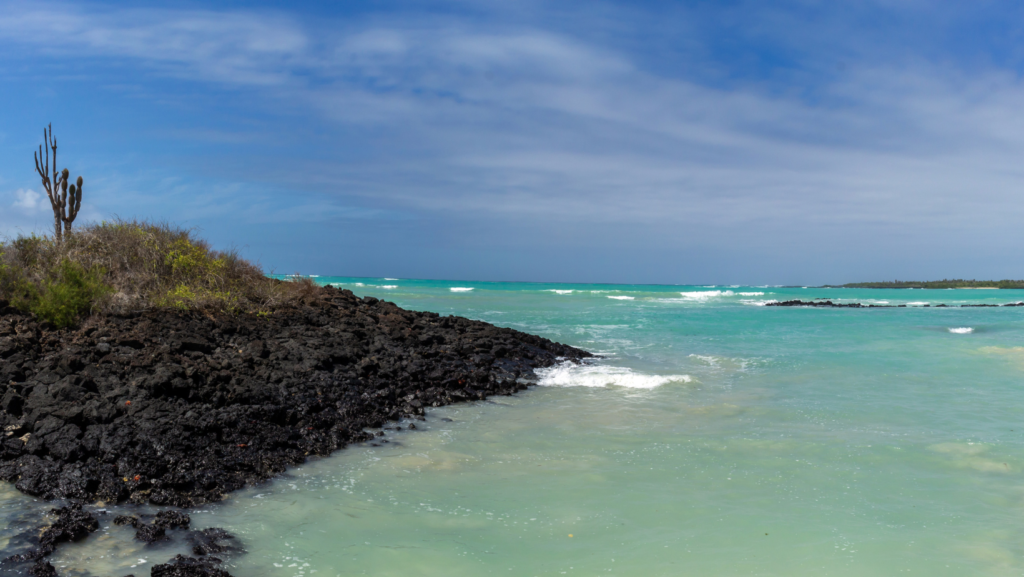

Los Gemelos, also known as the Twin Craters, are two impressive geological formations located on the highlands of Santa Cruz Island. These formations, although often called craters, are actually volcanic sinkholes created by the collapse of empty magma chambers.
Surrounded by a lush forest of scalesias, a plant endemic to the Galapagos, Los Gemelos offers a unique environment, different from the typical coastal landscape of the islands. This cloud forest is home to rich biodiversity, including endemic species of flora and fauna, such as Darwin’s finches, owls and several species of ferns and mosses.
A visit to Los Gemelos begins with a hike through well-maintained trails that allow visitors to explore these spectacular sinkholes. The trails are lined with dense, green vegetation, creating a calm and refreshing environment. As you progress, it is common to find local birds and hear the sounds of nature surrounding the area.The views from the crater rims are impressive, offering panoramic views of the huge depressions surrounded by vegetation. This contrast between the deep craters and the surrounding greenery creates a visually striking scene, perfect for photography and nature lovers. In addition to its natural beauty, Los Gemelos is a great place to learn about the geology and ecology of the Galapagos. Local guides often provide detailed information about the formations, the island’s volcanic history, and the importance of cloud forest ecosystems in biodiversity conservation.


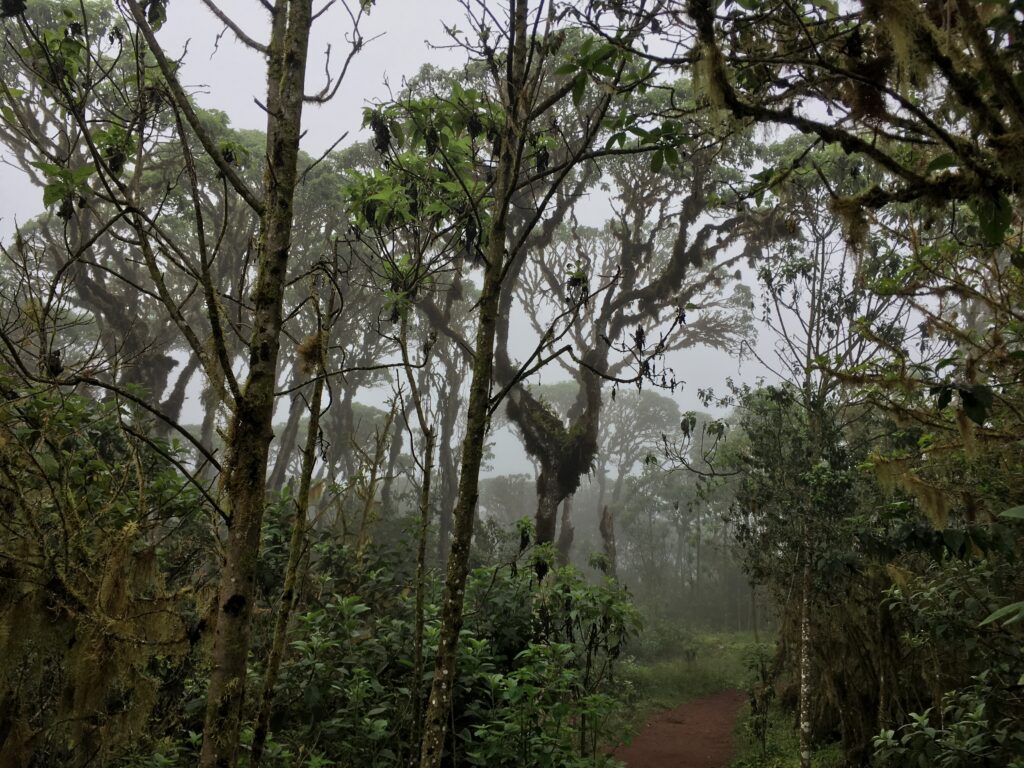
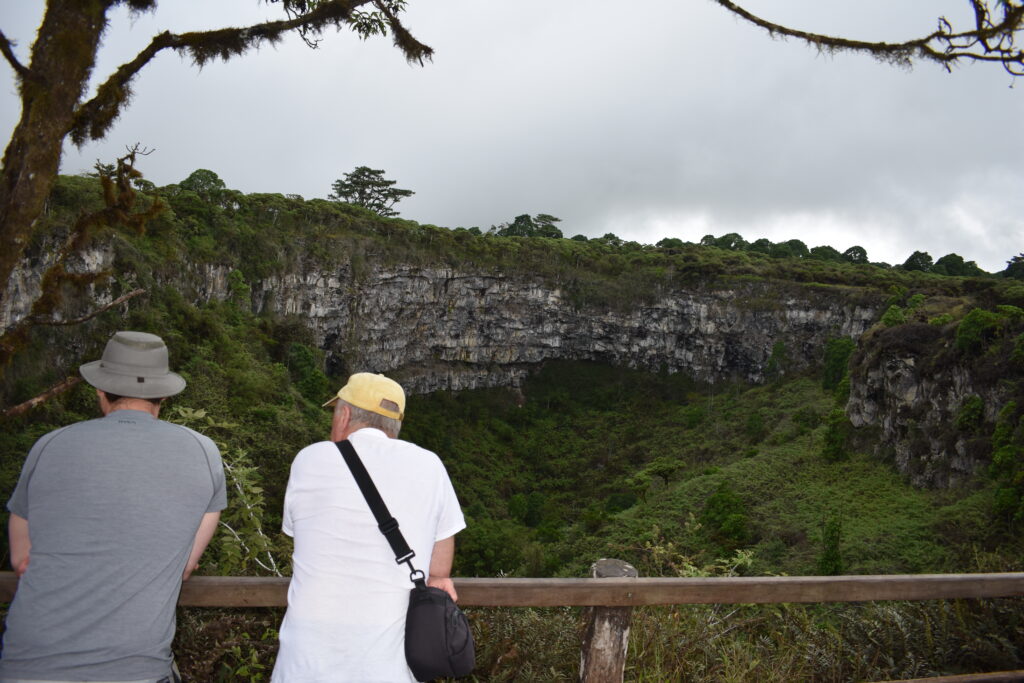
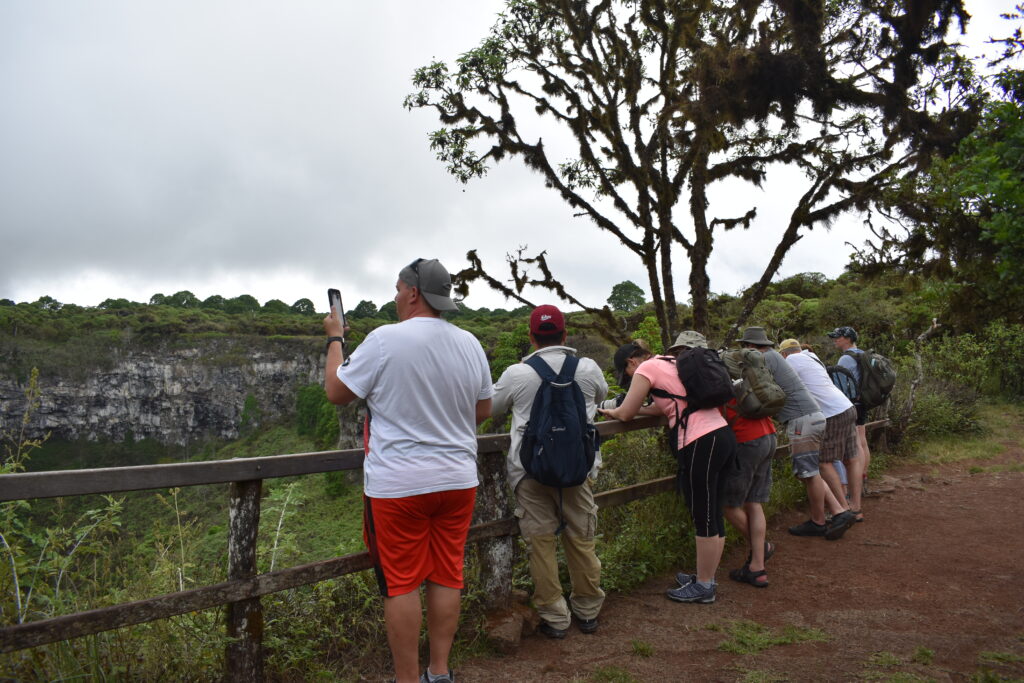

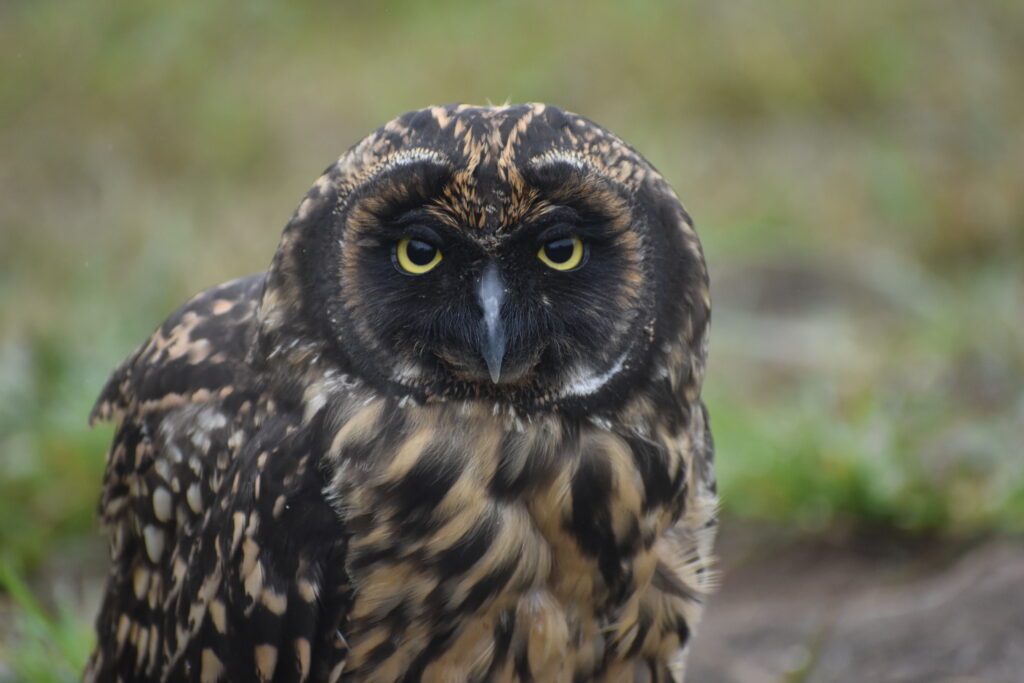
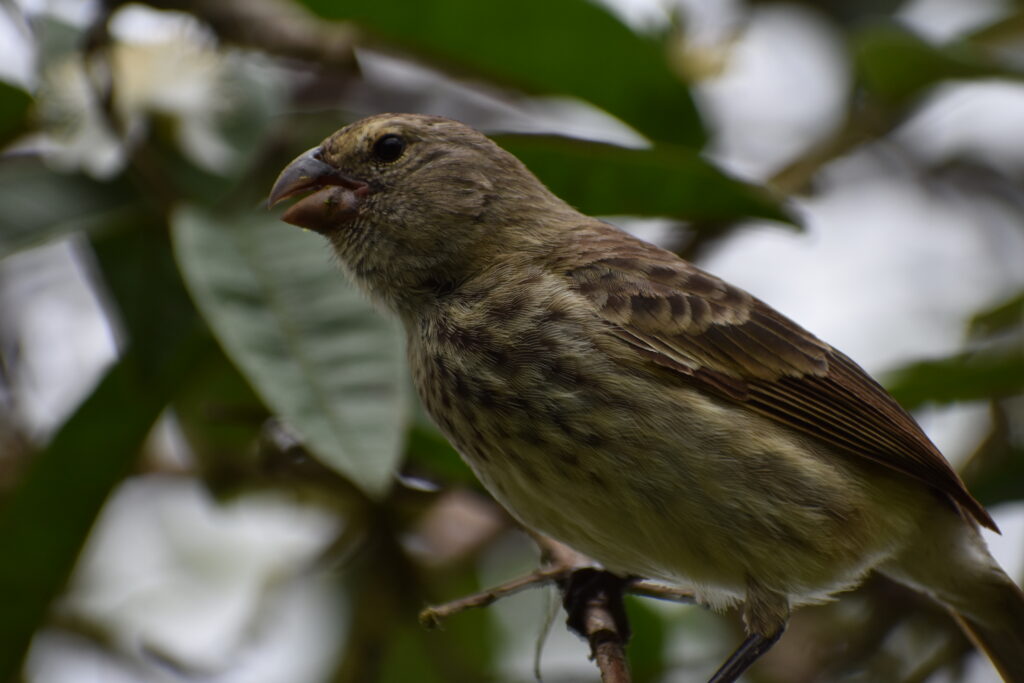

Las Grietas are fascinating geological formations located near Puerto Ayora on Santa Cruz Island. This stunning natural destination consists of a series of deep crevices filled with crystal clear water, surrounded by high walls of volcanic rock, creating a unique natural pool, loved by visitors for its beauty and opportunities for exploration.
To reach Las Grietas, visitors must take a short water taxi ride from Puerto Ayora Harbor to the Angermeyer Point dock. From there, a walk of approximately 15 to 20 minutes takes visitors through a picturesque landscape, including white sand beaches, a cactus forest, and salt flats home to flamingos and other migratory birds.
The cracks formed from fractures in the volcanic rock, filled with a mixture of fresh and salt water, creating an ideal environment for swimming and snorkeling. The clarity of the water allows for exceptional visibility, revealing a variety of aquatic life like tropical fish. The rock walls reach impressive heights, creating a dramatic and picturesque atmosphere.
The combination of stunning scenery, crystal clear waters and the opportunity to observe local flora and fauna makes Las Grietas a must-visit destination for those visiting Santa Cruz Island. This hidden corner of the Galapagos offers a unique and memorable experience, ideal for nature and adventure lovers.
You must reserve your place in advance as the National Park limits the number of visitors allowed on the site.
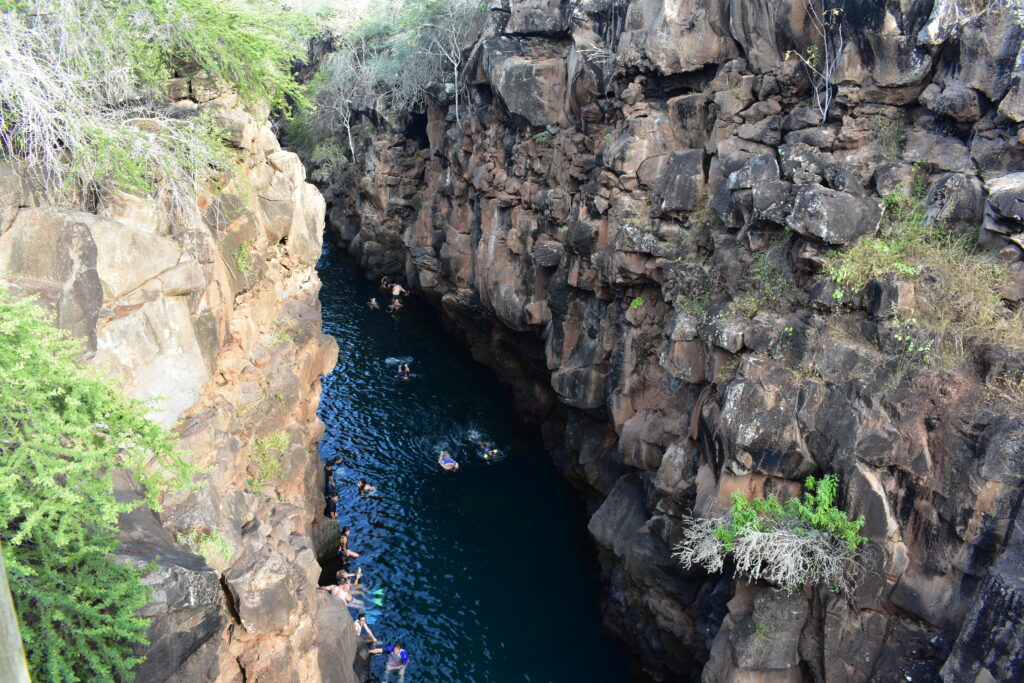
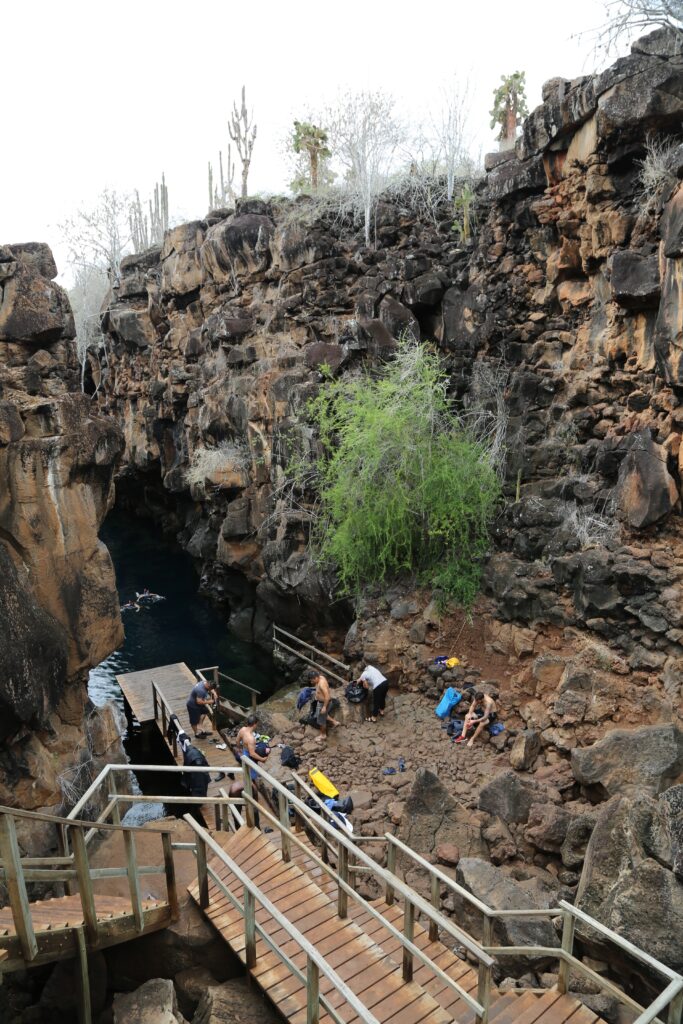
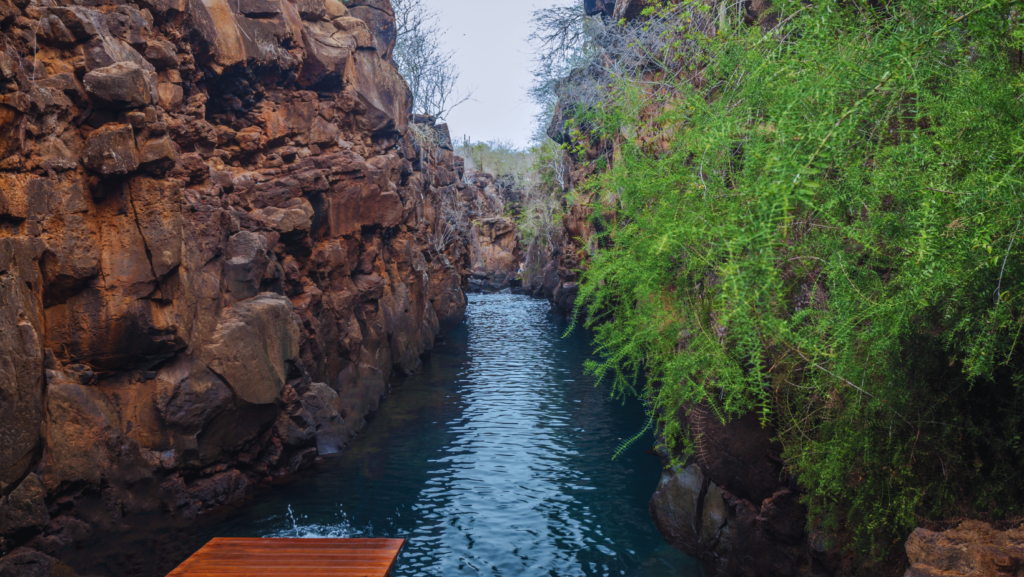


The El Chato Reserve, located in the highlands of Santa Cruz Island, is a natural refuge known for being one of the best places to observe the famous giant tortoises in their natural habitat. This reserve offers a unique experience to visitors, who can walk among these impressive creatures that move freely throughout the area.
The reserve’s landscape is made up of lush green meadows, rainforests and small lagoons, creating an ideal environment for wildlife. In addition to giant tortoises, it is common to see endemic birds such as Darwin’s finches, herons and Galapagos ducks. Visitors can also explore lava tunnels, underground formations that originated when volcanic lava flowed thousands of years ago.
El Chato Reserve is a perfect place for nature and photography lovers, offering a combination of biodiversity and unique landscapes. Additionally, visiting the reserve contributes to conservation efforts and protection of giant tortoises and their environment.

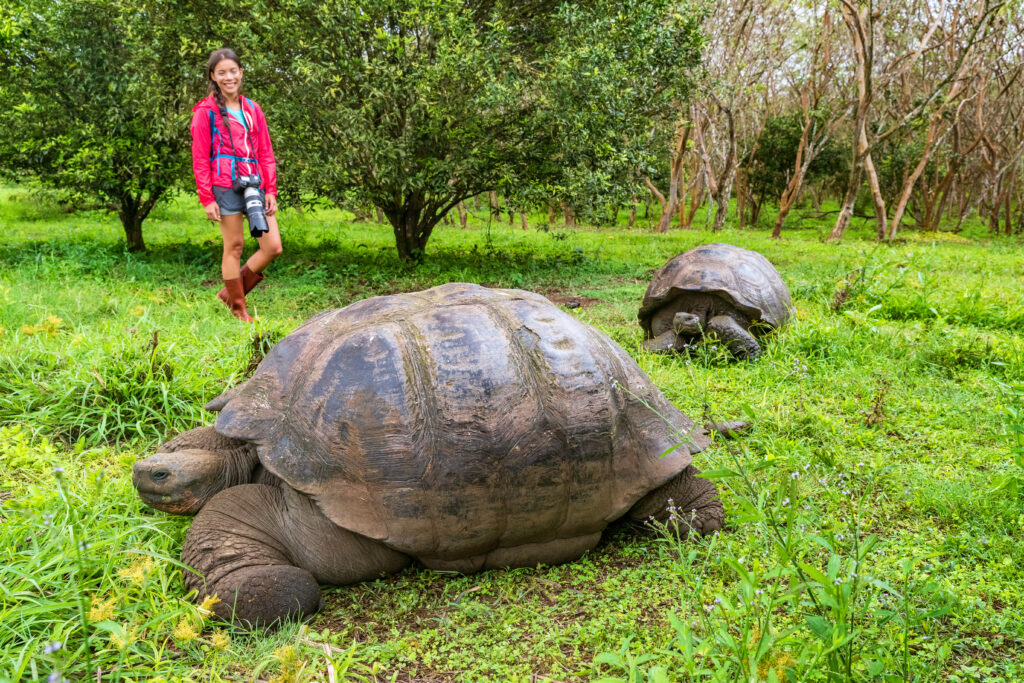
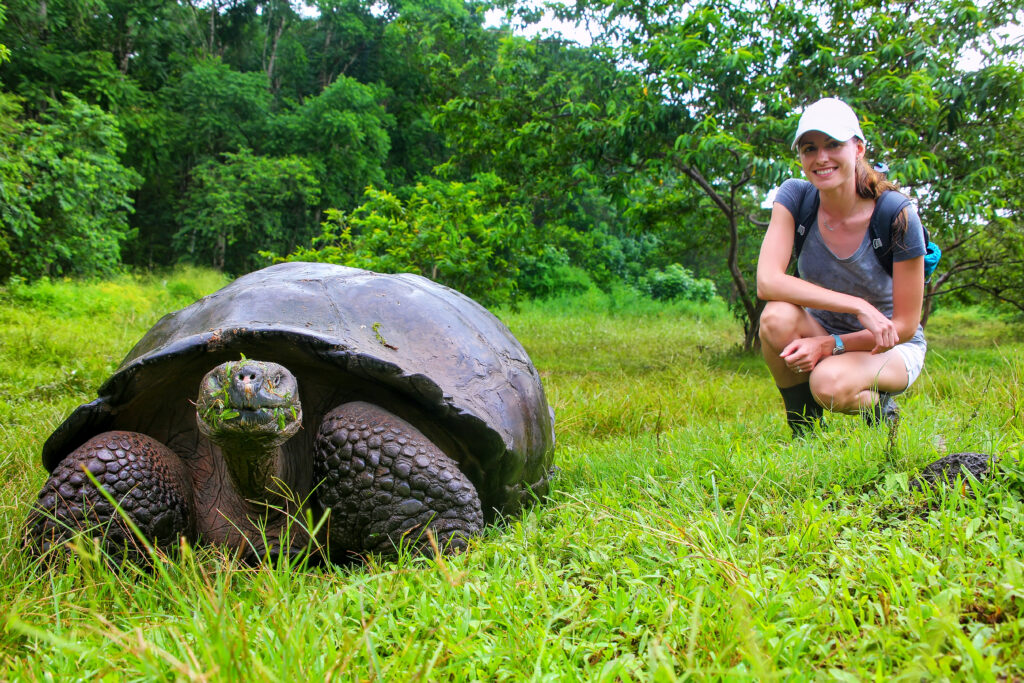
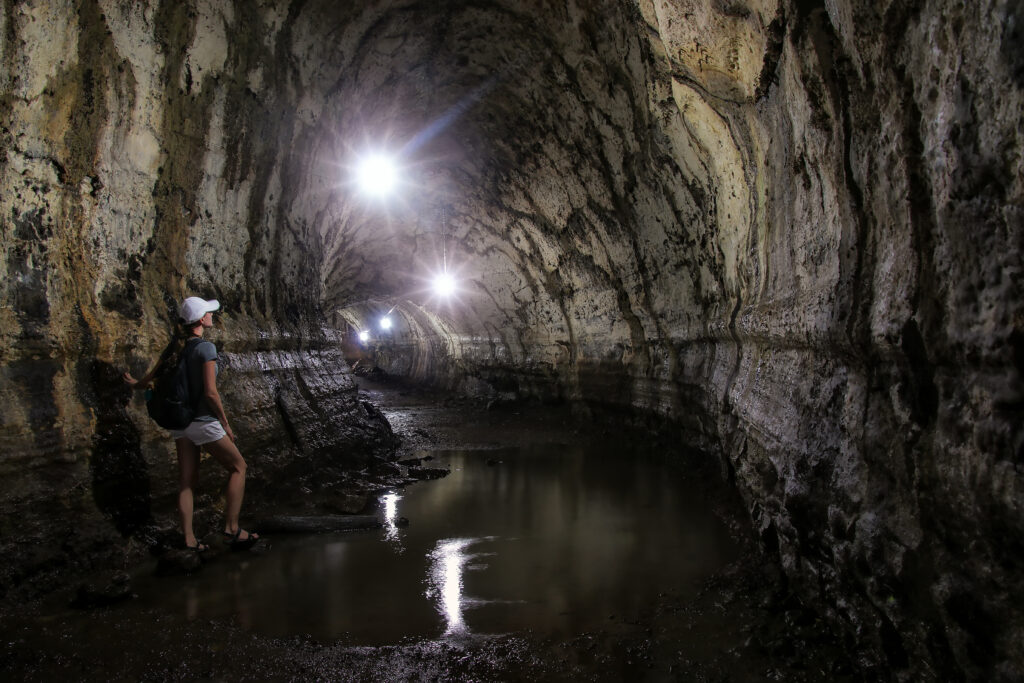


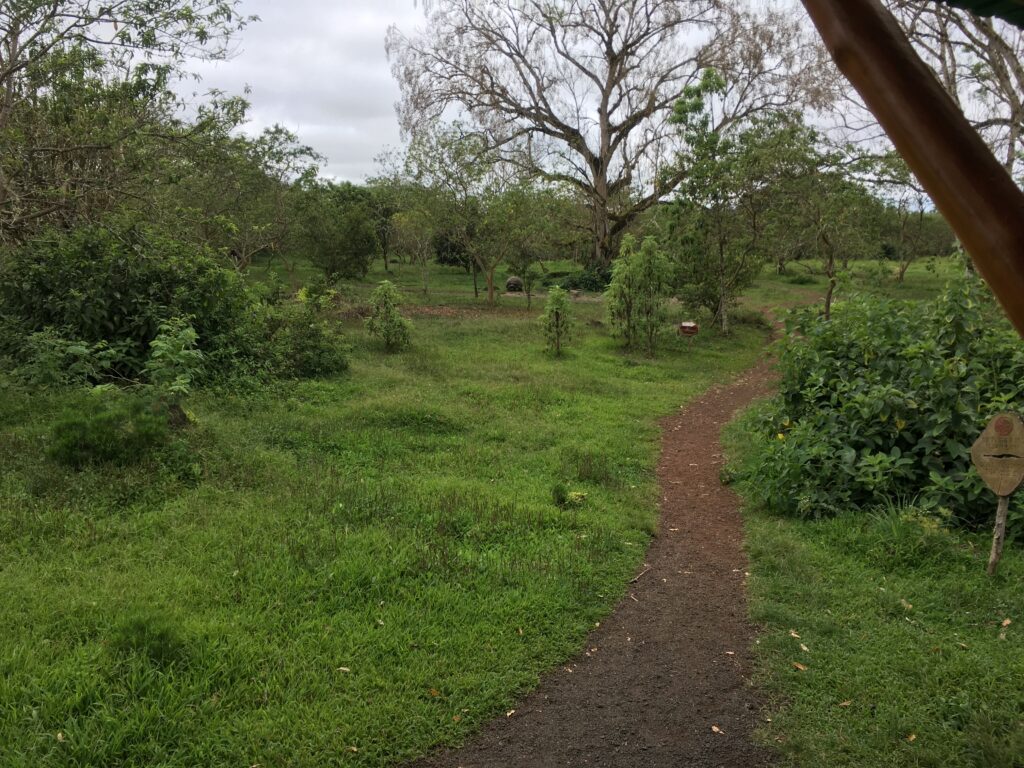
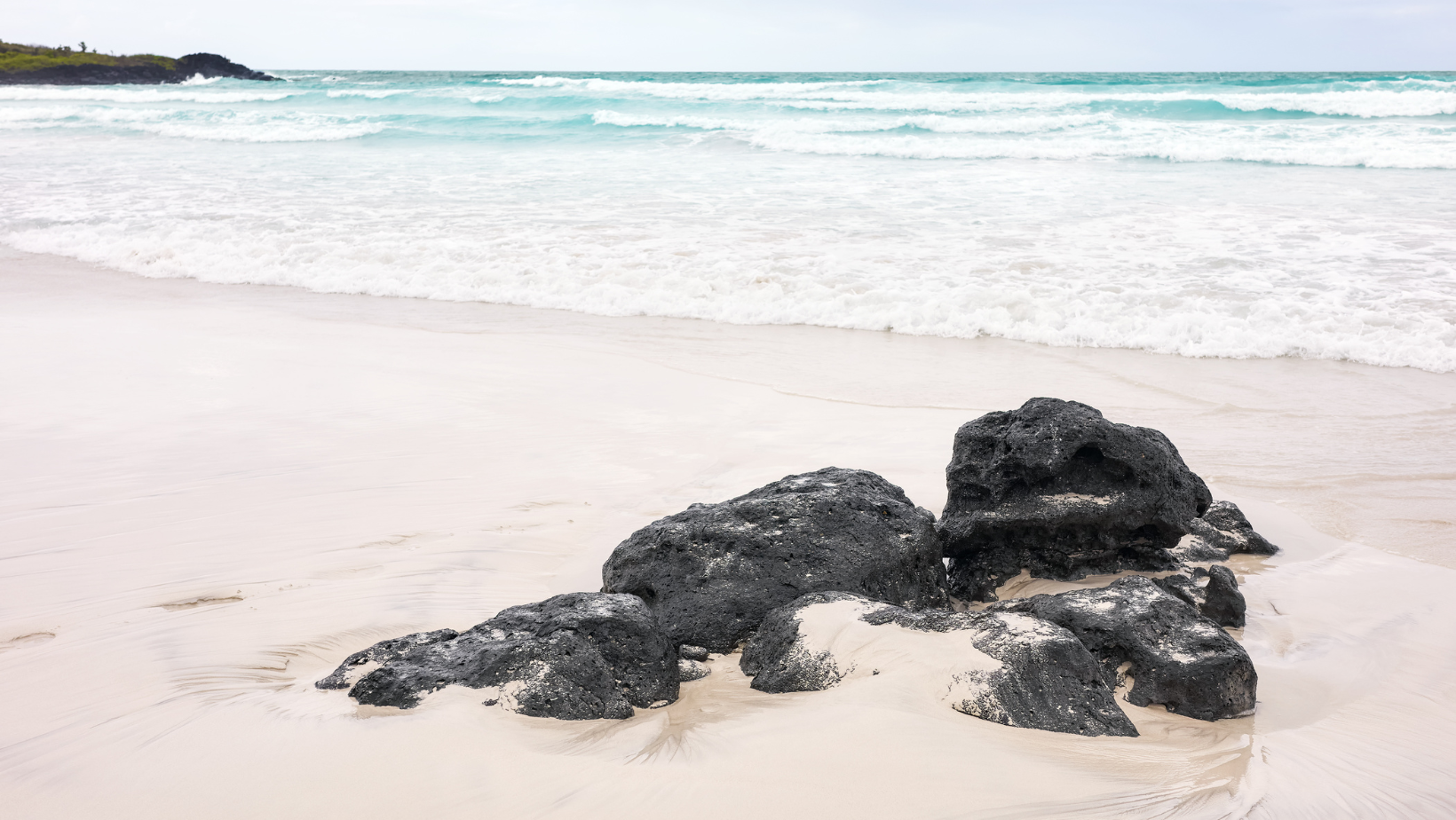
Tortuga Bay Beach, located on Santa Cruz Island, is one of the most beautiful and popular beaches on the Galapagos Islands. This magnificent beach, with its white sand and crystal clear waters, is the ideal place to enjoy the natural beauty and tranquility of the archipelago.
To reach Tortuga Bay, visitors must walk approximately 2.5 kilometers from Puerto Ayora town, along a well-marked trail that passes through an area of native vegetation, offering the opportunity to observe various species of flora and fauna along the path.
The beach is divided into two main areas : Playa Brava and Playa Mansa. Playa Brava, with its strong waves, is ideal for surfing and offers spectacular ocean views. However, due to strong currents, swimming is not recommended.
In contrast, Playa Mansa is a calm, protected bay perfect for swimming, snorkeling, kayaking, or simply walking and relaxing in its calm waters. This area is ideal for families and those looking for a safer and more serene environment to enjoy the sea.
Tortuga Bay is also a paradise for nature lovers. Visitors can see a variety of animal species there, including marine iguanas. You’ll also be able to spot migratory birds along the coast, pelicans and Darwin’s finches and, of course, the sea turtles that give the beach its name, especially during nesting season. Baby hammerhead sharks can also be seen finding refuge in the mangroves.
Conservation is a priority at Tortuga Bay and visitors must follow the rules put in place to protect this delicate environment. Pets are not allowed and it is mandatory to take all trash with you to keep the beach clean and preserve its natural beauty.
Exploring Playa Tortuga Bay is an unforgettable experience that combines the wonders of the natural landscape with the opportunity to observe Galapagos wildlife up close, while enjoying one of the most spectacular beach destinations in the world.

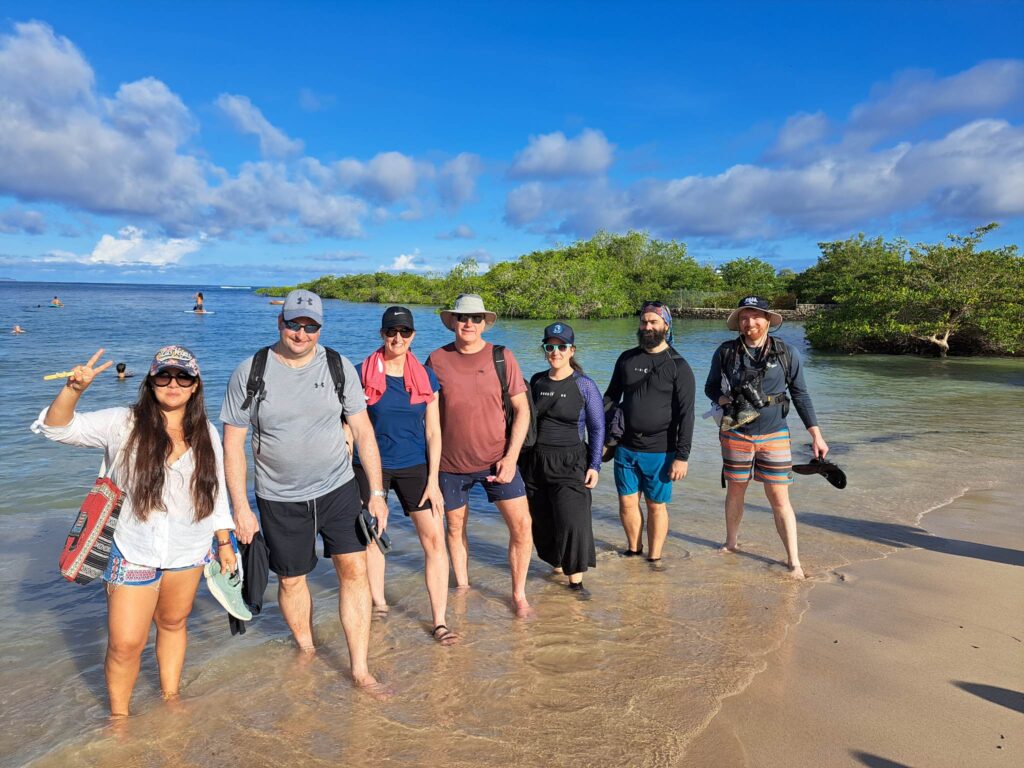


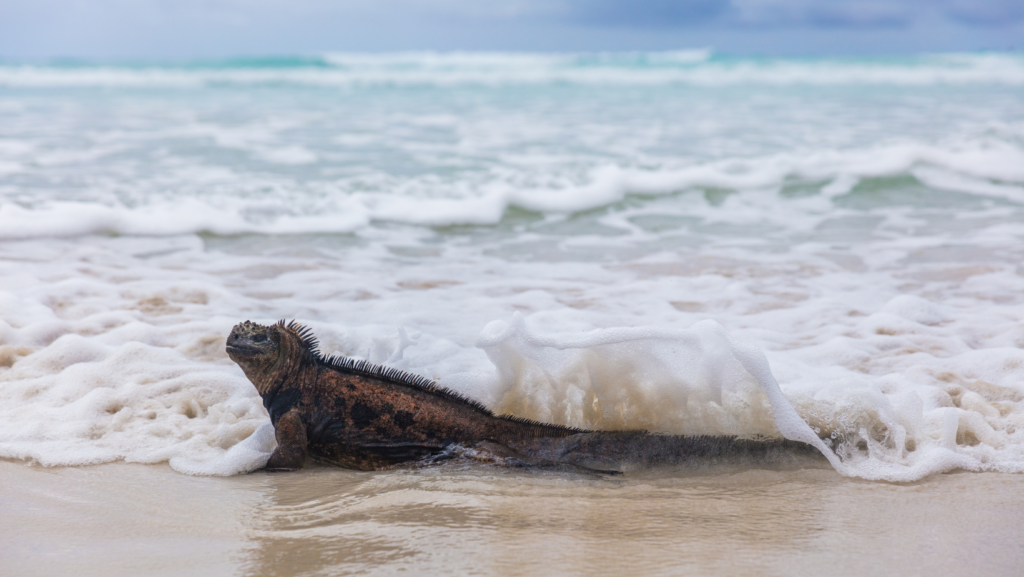
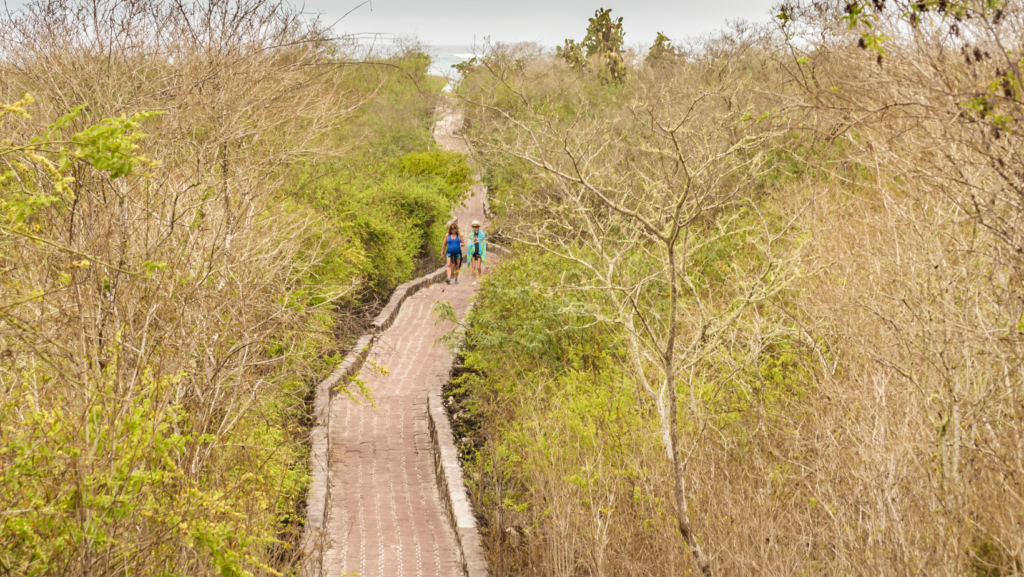
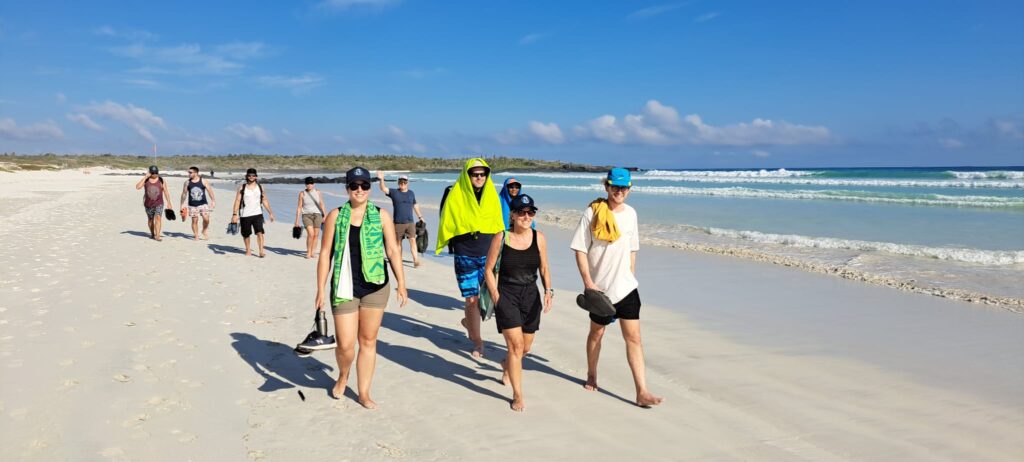
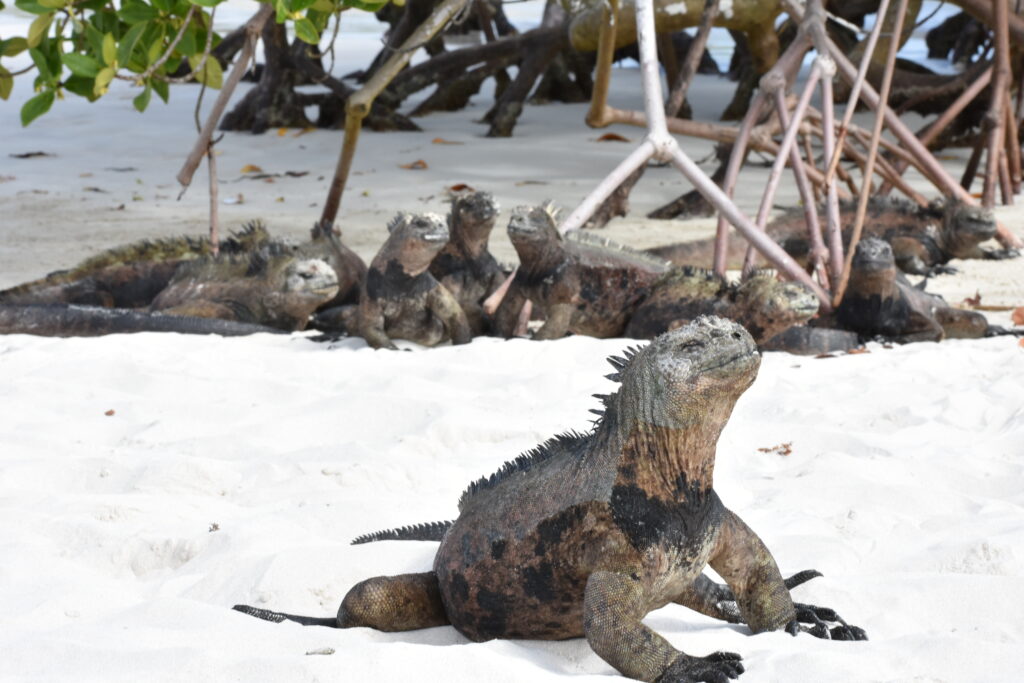
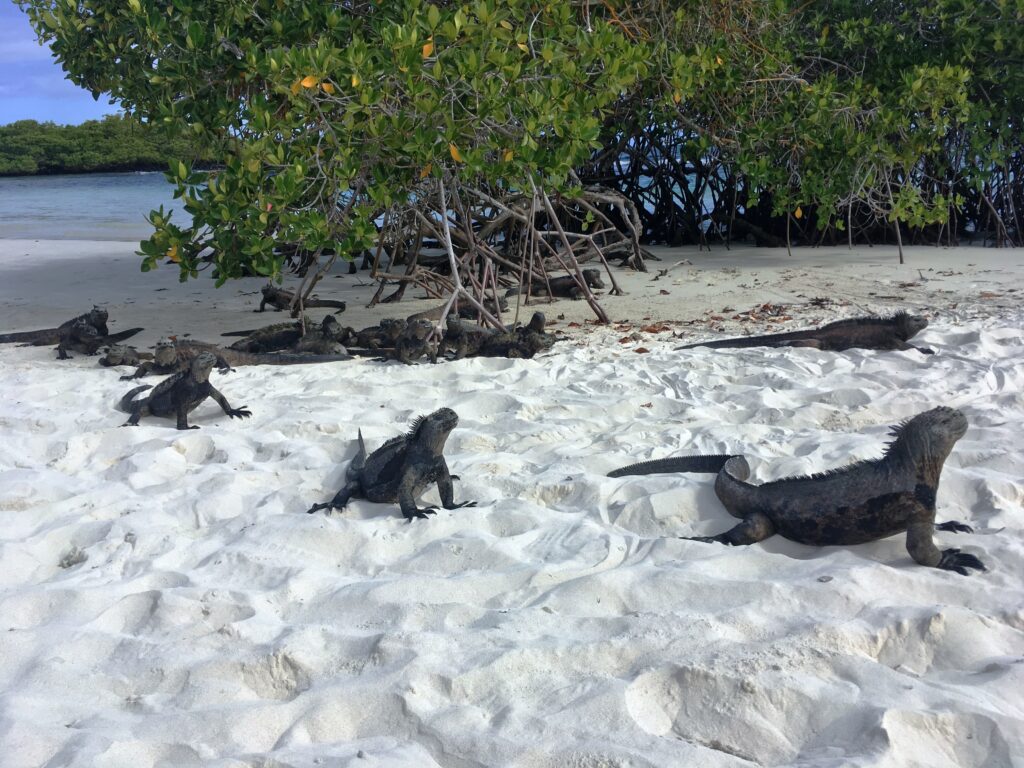
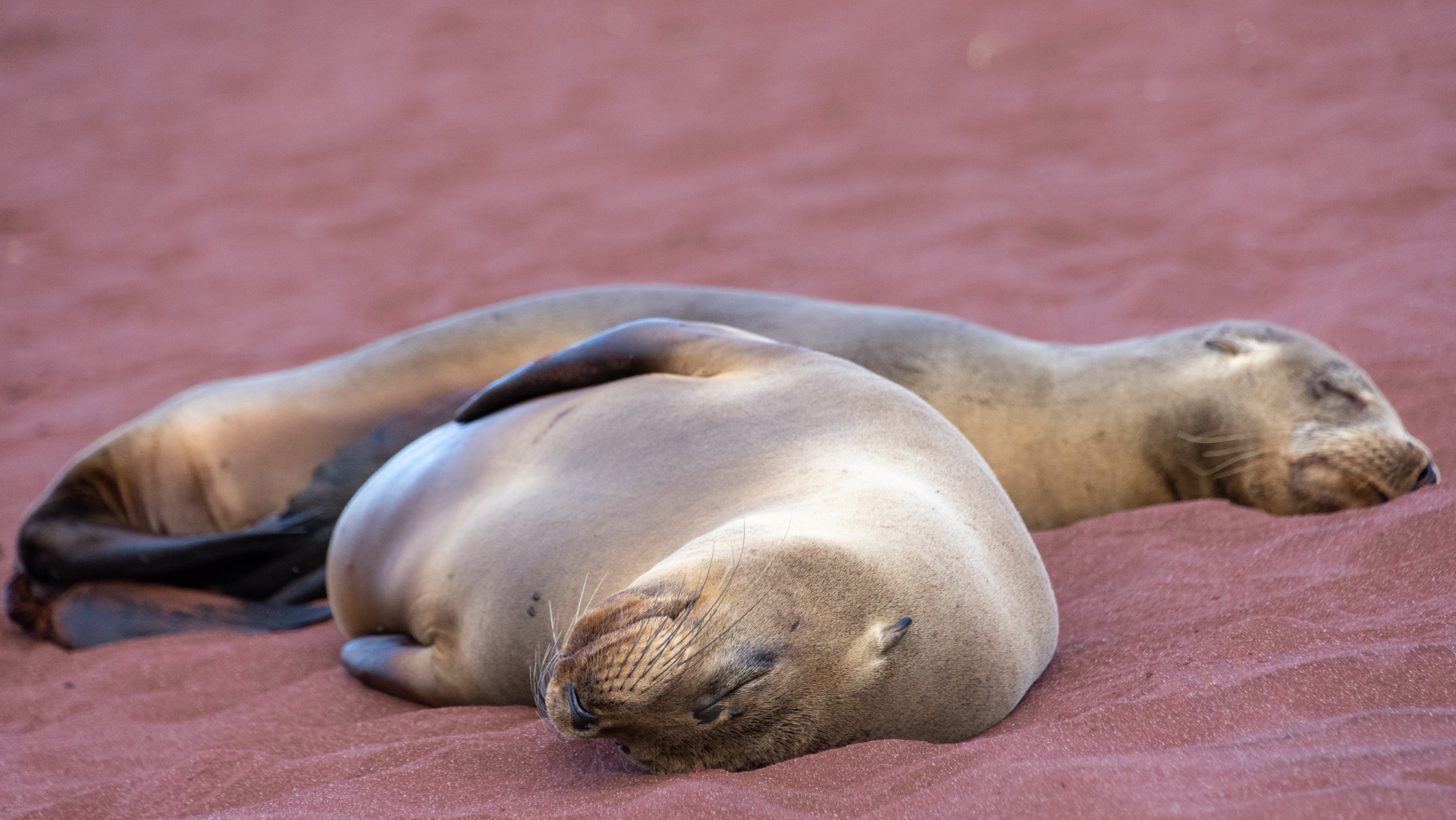
Rabida is one of the small islands located south of Santiago Island. This island has the greatest diversity of rocks and volcanic lava of the entire archipelago and is often identified as the geographic center of the Galapagos. It is possible to go scuba diving or snorkeling near the coast of the island. This island is visited as part of some naturalist cruise itineraries.
Dive site
Most of the action takes place on the northern portion of the islet, where it is possible to observe turtles, white-tip sharks and large schools of fish. The site is perfect for beginners, with maximum depth reaching around 60 feet (18 m).

